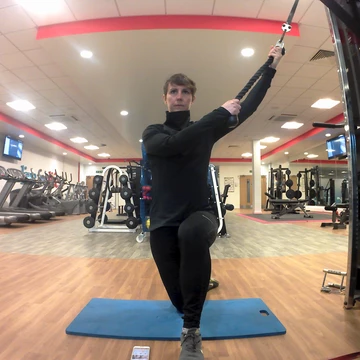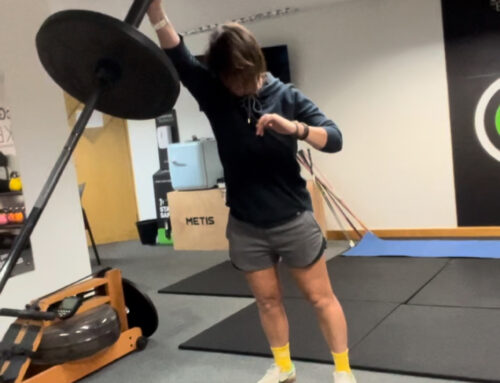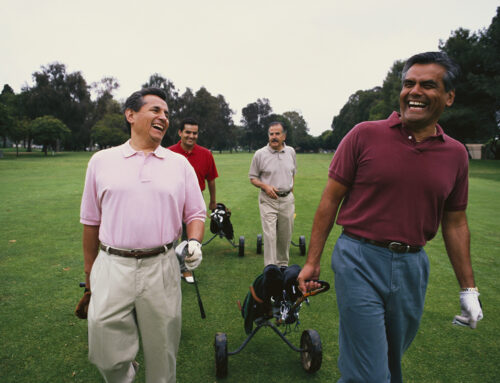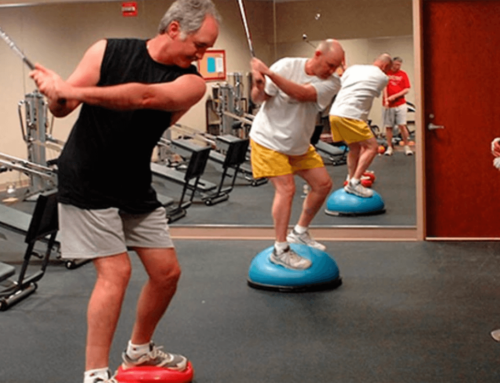
Train your core for a better golf swing
By Rachael Tibbs | August 22, 2022
The core is a common buzzword in the world of fitness and sports performance and is often misunderstood in its meaning. So what is ‘the core’and why is it important that it is trained correctly for golfers?
The core encompasses the vast muscles in the trunk (abdominals), hips (glutes, hip rotators) and back (spinal erectors, QL, multifidus). The main function of these muscles is NOT to create movement but to reduce it and more specifically stabilise the spine and pelvis.
The core is the vital link between the lower and upper body and a ‘stiff’ core is important to enable the transfer of energy from the ground to the golf club.
In his book Functional Training for Sports, TPI Board Advisor Mike Boyle asks the question ‘can you push a rope?’ The answer is NO – you can’t push it effectively because it lacks stiffness, and it is this stiffness that we need to ensure a smooth transfer of energy up the chain into the golf club.
The benefits to golfers
Demonstrating better core stability in your golf swing can have numerous benefits to your golf game. The main areas being:
Reduced injury
Low back pain is quite prevalent in golfers, especially amateur golfers. Having the ability to use the ‘core’ muscles to limit the movement in the lower spine and pelvis during the golf swing can reduce the pressure placed on the spine and reduce/prevent lower back pain and injuries.
Improved ball striking
With a ‘stiffer’ core, comes the ability to maintain better posture, especially through the golf swing when there are many rotational forces placed upon the body. This stability will lead to more consistent swings and better ball striking – making your shots cleaner and easier to determine more accurate club selection/yardage.
Increased distance
In his acclaimed book Athletic Development, Vern Gambetta states that “a strong stable core allows for expressions of dynamic functional strength and improves neuromuscular efficiency”.
In the golf swing this is expressed as the ability to create more force and speed from the ground and transfer it into the clubhead – thus increasing clubhead speed.
The more clubhead speed, the further you will hit the ball and statistically the further you hit the ball, the less shots that you take on a hole/round.
What is the best way to train this?
The ability to resist rotation is key in the golf swing and developing motor control gives you the ability to move your hips or extremities without compensatory movement of the spine. Below are some of my favourite go to exercises that I use with my golfers to help develop core stability relevant to movement in the golf swing.
Dead Bugs
One of my all time favourite exercises is the dead bug and one which many do not find easy. This is a great exercise to stabilise your core and keep your lower back stable (preventing arching) whilst moving your arms and legs.
Check out the full video on the TPI website: http://www.mytpi.com/exercises#dead_bugs_opposite_arm_and_leg

½ Kneeling Pallof Press
An increasingly popular anti-rotation exercise is the pallof press and it’s many variations. I like to start with the ½ kneeling position as it enables you to lock down the pelvis and focus on stability of the distal hip and glutes.

½ Kneeling Inline Chop
I like the inline variation (taken from Mike Boyle’s New Functional Training for Sports) as it creates a little more instability with the narrow stance. The core musculature (abs, obliques and glutes) have to work hard to maintain this position whilst the torso is rotating above it.

Basic Side Rotations & Seated Side Throw
As golf is a rotational sport we should also be training the core in diagonal patterns. These side rotations and seated throws (taken from Athletic Development – Vern Gambetta) are a fantastic way to develop the opposite hip/shoulder load and relationship they have in the golf swing.





